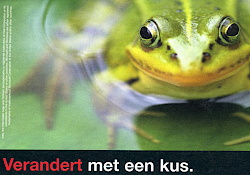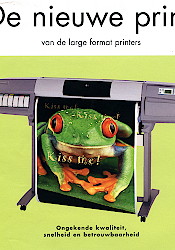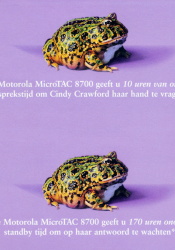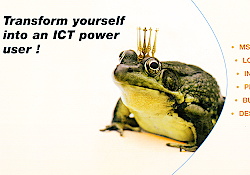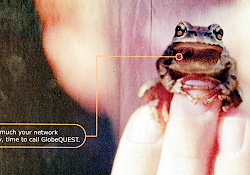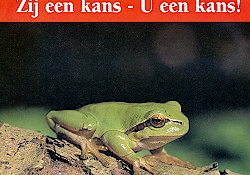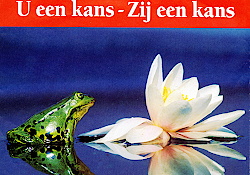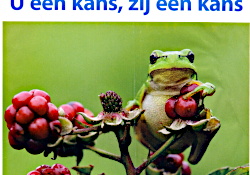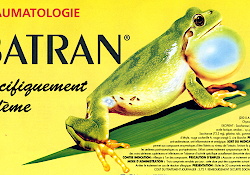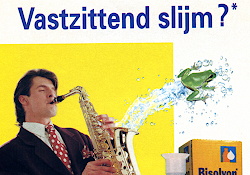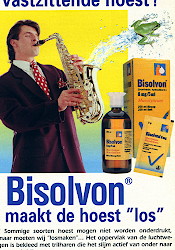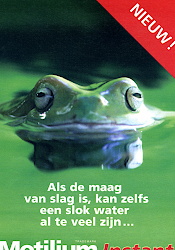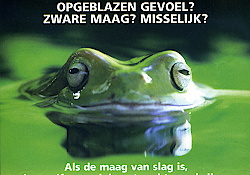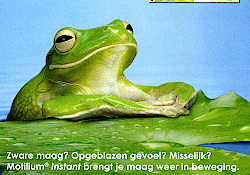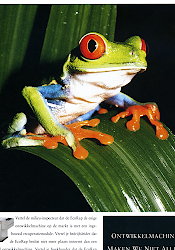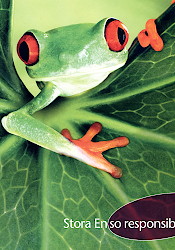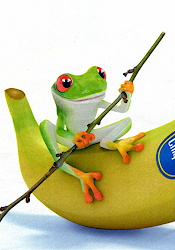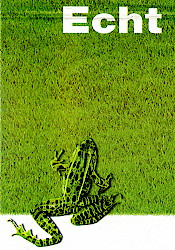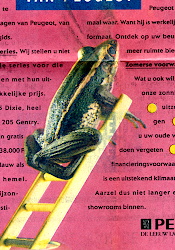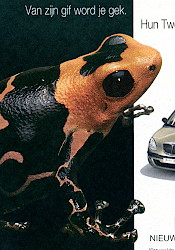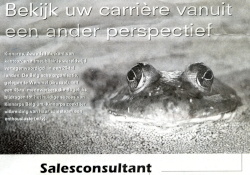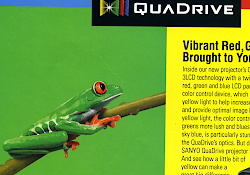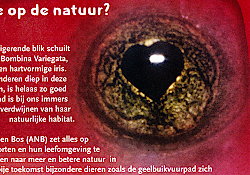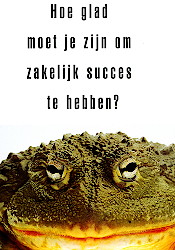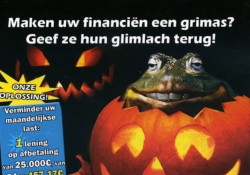With our next
example we are leaving the world of fairy tales and magic.
But we stay a while longer in the communication world with № 11. A small
frog is shown with the caption:
If this reminds you of how much your network solutions provider can grow, …
The text then continues with
You'd jump at any chance to make your business grow. …
and
… make your company hop far enough
. We have the keywords
jump,
and
hop, and we have the fingertip sized frog. The frog stands for the limitations of your current telecom possibilities.
The idea is straightforward.
The small print however is confusing, to say the least. Occasionally an advertisement tries to learn us something about the
species shown (see f.e. Giraffe, Bats,
Dolphins). In the case at hand the tiny brown frog comes accompanied with the
following information:
The Red Eyed Tree Frog is distinct because of the lack of capacity to grow. Even at full adulthood, it can only reach a maximum size of 2 inches for both males and females.
I am not entirely happy with this elucidation.
A quick look-up on any search engine will reveal that females of this species grow about one inch taller than the males.
Not that I trust answers coming from the internet with my eyes closed, but still. Also the frog in question undeniably
has the capacity to grow, otherwise it would never develop from tadpole into adult —unless the tadpole is bigger than
the adult. But then, the tadpole has grown from the egg. And there is more.
The Red Eyed Tree Frog is the frog of choice for many advertisers.
The species does appear several times on this page (Nos. 3, 9, 22–26, 32).
While it's great to learn interesting things about the live of animals, it is troubling that the species in the picture is not the Red Eyed Tree Frog. I checked with our species watchguard and neither he nor I could find any reference
to a brown stage in this frog's life. Also the pupils of the eyes in the advert are horizontal, which is wrong.
Let's assume they are better in broadband than in species identification. It is an example of inadequate proof reading for sure.
Next come three
adverts for a lottery (12–14).
A chance for them – A chance for you!
When you buy a lottery ticket, part of what you spend goes to organizations for the protection of nature and the environment. The frogs stand in for the world with all its creatures.
Notice how the title was changed, probably to adapt to what people find most important.
In the first version (12) the title says: buy them a chance (to live) and you will get a chance (to win).
Later productions (13, 14) are saying: buy yourself a chance to win and in doing so give them a chance to live.


